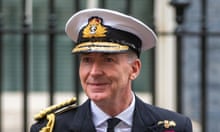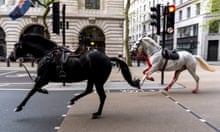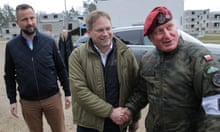Britain’s SAS faced allegations that it shot dead nine Afghans while they were sleeping and engaged in a policy of “executing Afghan males of fighting age” between 2010 and 2013, on the first day of a public inquiry into the killing of 80 civilians in Afghanistan.
Oliver Glasgow KC, the counsel to the inquiry, focused on seven deadly operations in Helmand province in southern Afghanistan, including one in February 2011 where only three AK47 assault rifles were recovered after the nine had been killed.
“The central allegation at the heart of this inquiry is stark,” Glasgow told the high court. Raids on family compounds, intended to target Taliban commanders, “were abused by elements within UK special forces”.
They “carried out a policy of executing Afghan males of fighting age in circumstances where they posed no immediate threat or were hors de combat [unable to perform combat duties],” in scenarios where they were vulnerable or said to have suddenly produced a gun or grenade.
The public inquiry, chaired by Lord Justice Haddon-Cave, is expected to take 12 to 18 months to produce an interim report. It marks the start of a process long sought by the victims but was only granted by Conservative ministers after two families took the British government to court.
Secrecy conditions imposed by the inquiry mean large parts of it will be held without the public or press present – and that the identities of any soldiers involved have been redacted, as well as the names of their commanding officers and other members of the SAS and many others in the British military.
Nor will the Ministry of Defence or the inquiry formally acknowledge the involvement of the SAS in Afghanistan, although it has been widely reported, instead describing those involved as members of the UK special forces.
Glasgow also highlighted emails that appeared to indicate there was an effort to brush concerns under the carpet, and scepticism in some quarters that internal reports on the growing number of deadly incidents were not credible.
A legal officer for the SAS said in February 2011 he was concerned about “the recent spate of high EKIA [enemies killed in action] and said: “I get the sense that the way we are writing these up will not bear scrutiny in years to come,” adding that they would be picked up by lawyers “in the inevitable public inquiries”.
Deadly incidents described by Glasgow include:
A night raid on 7 February 2011, when nine Afghan males, including a 14-year-old boy, were killed and three AK47 assault rifles recovered. “We anticipate the evidence from the families will be that they were shot in bed, most likely when asleep,” Glasgow said, and he told the inquiry that the photographs of the bodies suggested Afghans may have been shot at close range. Internal documents and emails obtained by the inquiry show that the SAS said that at the time its soldiers were engaged by small arms fire. The elite unit’s headquarters concluded that no military police investigation was required because “reasonable force in accordance with the law of self-defence” was used.
A night raid on 9 February 2011 where eight Afghans were killed, including four by friendly fire from their own side, the SAS said. Four AK-47s were found in a search of the site after the raid had concluded, while another man was killed when he was sent back into building, only to reappear with a weapon. An email sent the following morning from a chief of staff at the SAS headquarters to a legal colleague, and read out by Glasgow, expressed scepticism as they reviewed the initial reports. “It’s another one of ‘more bodies than weapons. Please review,’ they wrote. However, two days later same chief of staff accepted the “high body count” was justified by the fact that four Afghans were killed as “a result of fratricide”. Several years later, the episode was investigated by the military police, but when the SAS and Afghan armed forces members involved were questioned “all bar one of them was unable to recall” the gunfight, Glasgow said.
A night raid on 16 February 2011 in which four members of one family were killed, including a man called Saddam Hussein. British intelligence said he was a Taliban military commander – but Glasgow told the inquiry that his family had said was “a student in Lashkar Gah and so could not have been an insurgent,” while the other victims were civilians. Two of those were shot dead after allegedly producing a weapon when they asked to assist with the search of the property, prompting one member of the SAS, from another unit, to say the official description of the episodes was not credible, in an email read out by Glasgow to the court. “For what must be the 10th time in the last two weeks,” when an Afghan was sent back “to open the curtains (??) he re-appeared with an AK” they wrote to a colleague. “You couldn’t MAKE IT UP,” they added.
A complaint was raised subsequently by an unnamed international organisation. An email sent in May from a legal officer at SAS headquarters said “the aspiration” was “to ‘nip [the allegation] in the bud’ at the lowest level”.










